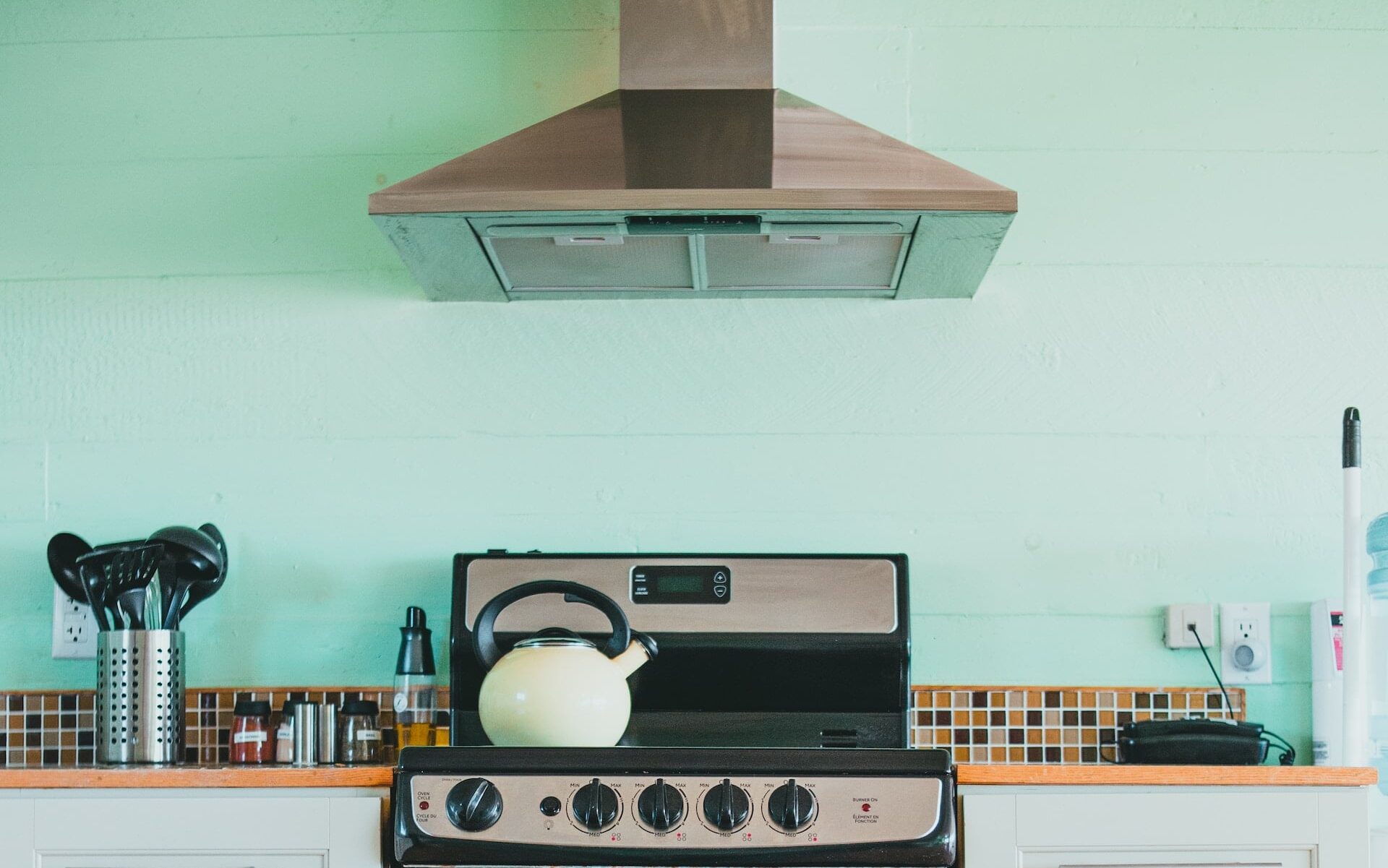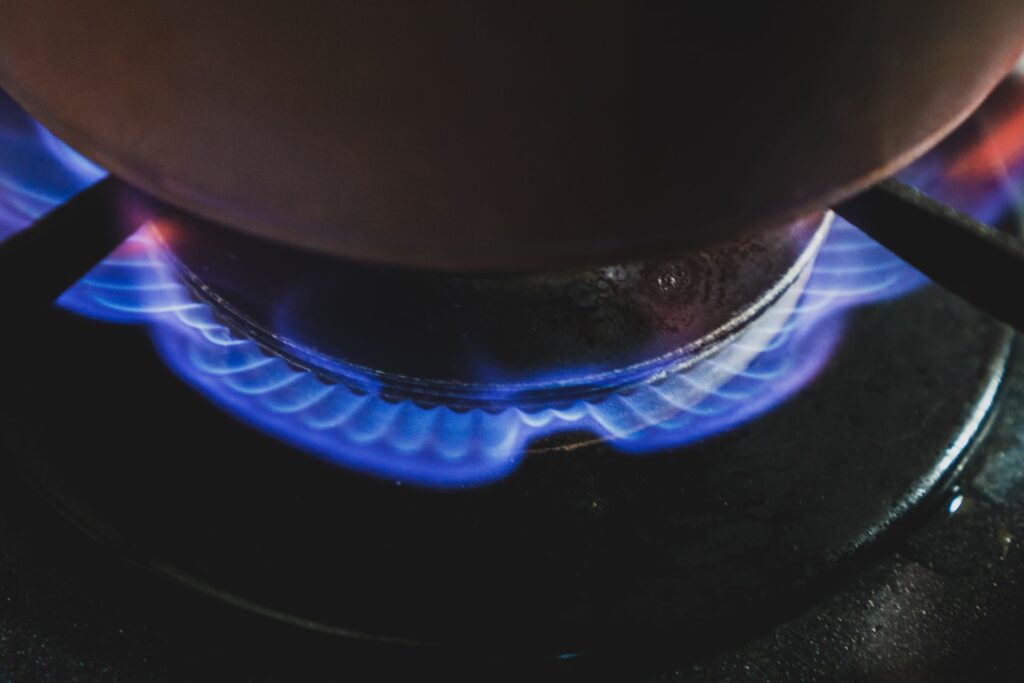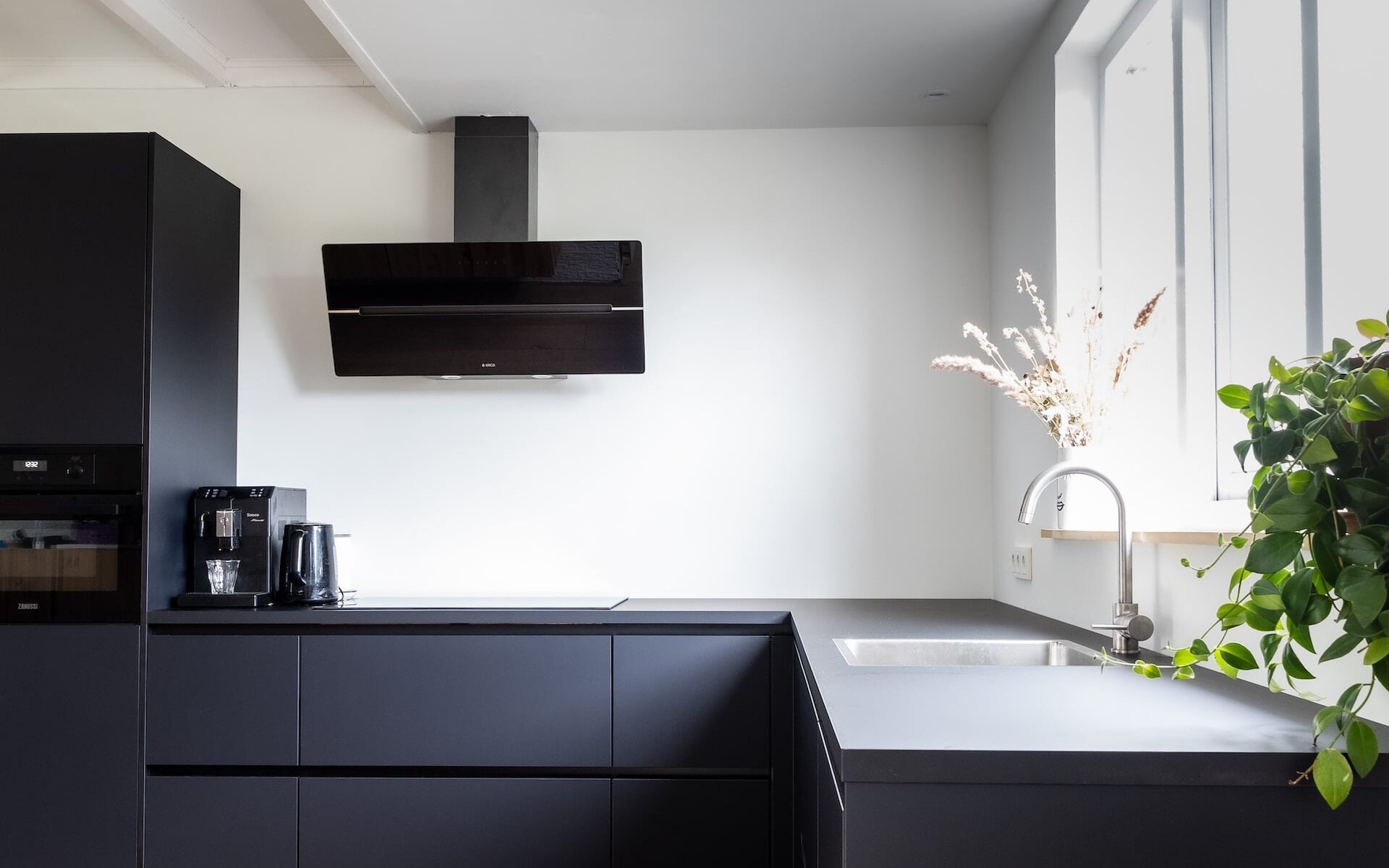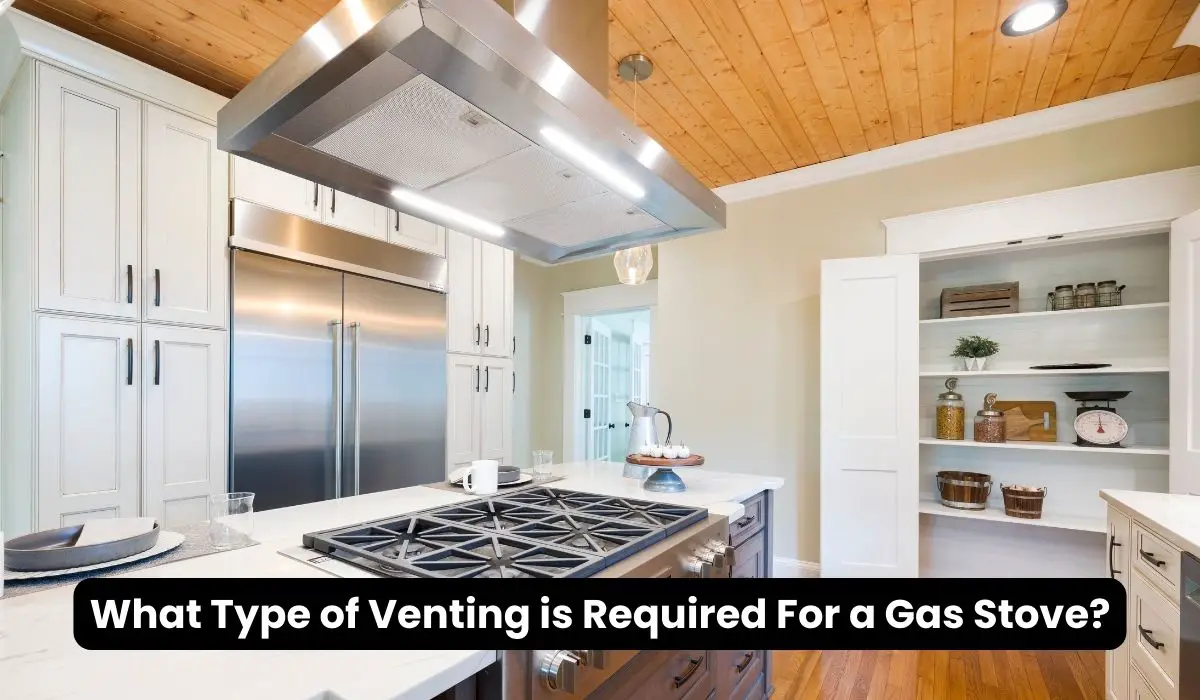Are you wondering about the secrets to safely and efficiently using a gas stove in your kitchen? Well, it all begins with a simple but crucial question: “What type of venting is required for a gas stove?” Whether you are an aspiring chef or simply a food lover, this topic affects everyone.
We’re here to demystify the world of gas stove venting in a way that’s easy to understand so you can cook up a storm while keeping your kitchen safe and cozy. Let’s dive into the ins and outs of gas stove venting, and by the end, you’ll have all the knowledge you need to make your kitchen a culinary haven.
Gas stoves are a common fixture in kitchens around the world, valued for their precise temperature control and rapid heating capabilities. However, using gas stoves comes with the responsibility of ensuring proper venting to safeguard your health and home. In this article, we’ll explore the different types of venting required for gas stoves, their importance, and the various options available to you.
Table of Contents
What is Venting for Gas Stove?

Venting for a gas stove may sound like a complicated topic, but don’t worry. It’s easier than it sounds. In simple terms, venting is like a magical path that helps all the smoky, greasy, and stinky stuff created while cooking on a gas stove escape from your kitchen. It’s like having a superhero for your home, keeping the air pure and safe to breathe.
How Does It Work?
Imagine your gas stove as a fire-breathing dragon, but instead of breathing fire, it’s cooking delicious meals. When you cook on a gas stove, it produces things like steam, smoke, and even some not-so-pleasant odors. All these things need to go away. That’s where venting comes to the rescue!
A venting system usually consists of a fan and a duct (a fancy word for a pipe) that goes outside your home. The fan is like a big vacuum cleaner. It sucks up all the unwanted stuff and sends it through the duct, where it’s released into the great outdoors. This means your kitchen stays fresh and clean even after you’ve cooked a feast fit for a king.
Do Gas Stoves Require Venting?
Yes, gas stoves do need venting. Venting is like a superhero for your kitchen. Here’s why:
Gas stoves work by burning natural gas to make flames for cooking. But when natural gas burns, it makes some yucky stuff, like carbon monoxide. You can’t see or smell it, but it can be not good for you if you breathe it in too much.
What Type of Venting is Required for a Gas Stove?

There are two main types of venting for gas stoves: recirculating and ducted (or external) venting.
1. Recirculating Venting
This is like a filter for your kitchen air. It sucks up the smelly stuff and then cleans it before sending it back into your kitchen. It’s like magic! But there’s a catch. While it’s better than nothing, recirculating venting isn’t as powerful as ducted venting, and some odors and particles might still linger in your kitchen.
2. Ducted Venting
This one is like a secret tunnel that takes all the bad air outside. It’s the best superhero for your kitchen! Ducted venting uses a system of pipes and fans to whisk away all the smoke and smells, making your kitchen air super clean. It’s like having a breath of fresh air every time you cook.
Now, here’s the important part: The type of venting you need depends on your kitchen’s setup and your cooking habits.
Recirculating Venting is a good option if you can’t install ducts or pipes to carry the air outside. It’s also more budget-friendly.
Ducted venting is the top choice if you can install ducts or already have them. It’s more effective at keeping your kitchen air clean, but it can be pricier to set up.
Remember, no matter which type of venting you choose, it’s essential to clean or replace the filters regularly. Think of it like changing the batteries in your toys – it keeps them working their best.
So, there you have it! Venting for your gas stove is like having a kitchen superhero that keeps the air clean and safe. Whether you go with recirculating or ducted venting, the important thing is to make sure your kitchen air stays fresh and free from unwanted smells and smoke.
Ventilation Requirements
1. Ventilation Rate
It’s essential to calculate the required ventilation rate based on your stove’s heat output. This ensures the efficient removal of cooking byproducts. Consulting with an HVAC professional is recommended to determine the correct rate for your setup.
2. Hood Size
Select a vent hood that matches the size of your gas stove. The hood should fully cover the cooking area to capture all the fumes effectively.
3. Vent Hood Height
The ideal height for your vent hood is typically 24 to 30 inches above the cooking surface. This height allows for efficient capture of cooking byproducts.
Is It Safe To Use A Gas Stove Without A Vent?

Gas stoves are amazing for cooking yummy meals, but they have a secret. When you cook with them, they release things like smoke, tiny particles, and gases that you definitely don’t want to breathe in too much. That’s where vents come into play. They’re like kitchen superheroes that help keep the air clean and safe.
But what if you don’t have a vent? Is it safe to use your gas stove without one? The answer is a bit tricky.
Using a gas stove without a vent isn’t super dangerous, but there are better ideas than this one. Here’s why:
Air Quality:
When you cook on a gas stove, it can make the air in your kitchen less clean. If you don’t have a vent to whisk away the smoky stuff, you might breathe in some of those icky particles and gases. It’s not great for your health, especially if you have allergies or asthma.
Smells and Odors:
Without a vent, the smells from your cooking can stick around longer. That might be fine if you’re making cookies, but it can be a problem if you’ve been frying fish or something super smelly.
Safety:
While it’s generally safe, there’s a tiny chance that if you cook a lot without a vent, the air in your kitchen could get a bit stuffy. It’s kind of like being in a room with too many people – it can make you feel a bit uncomfortable.
So, here’s the deal: It’s safer to use a gas stove with a vent because it helps keep the air clean, your kitchen smelling fresh, and you feeling comfy while you cook.
If you don’t have a vent, it’s a good idea to open a window or use a fan while you cook. That way, you can let some fresh air in and help the not-so-great air go away. And remember, always be careful in the kitchen, whether you have a vent or not.
In a nutshell, it’s safe to use a gas stove with a vent, but it’s better to have one to keep your kitchen air fresh and clean. Stay safe, and keep on cooking those delicious meals.
Is a Microwave Vent Enough for a Gas Stove?
A microwave vent is handy for some things, but it might not be enough for a gas stove. Let me explain it in simple terms:
You know how a microwave has a fan to suck up the steam when you heat your soup or leftovers, right? That’s because microwaves can make a little bit of steam, and the fan helps keep your kitchen from getting all steamy.
Now, when we talk about a gas stove, things are different. When you cook on a gas stove, it can make more smoke and fumes than a microwave. These fumes are not just steam; they can be from the flames and the stuff you’re cooking. A microwave vent might not be strong enough to take care of all the smoke and fumes from a gas stove.
For a gas stove, it’s usually better to have a special vent or hood that’s designed to control all the added stuff that comes from cooking with gas. These vents are stronger and do a better job of getting rid of the smoky air, so your kitchen stays nice and clean.
So, while a microwave vent is good for microwaving, it’s not usually enough to handle all the smoke and fumes from a gas stove. You’ll want a proper vent or hood for that job.
Benefits of Proper Kitchen Ventilation:

Let’s talk about the cool benefits of having a proper kitchen ventilation system:
1. Fresh Air
When you cook, sometimes it can get smoky and steamy in the kitchen. A good ventilation system helps to get rid of all that smoky air and brings in fresh, clean air from outside. It’s like a breath of fresh air for your kitchen!
2. No Smelly Surprises
You know how some foods can be a bit smelly when you cook them, like fish or certain spices? Well, a proper kitchen vent helps whisk away those smells so your whole house doesn’t smell like last night’s dinner.
3. Keeps Things Cool
Cooking can make your kitchen pretty hot. But with a good ventilation system, it can help keep your kitchen cooler and more comfortable, even when you’re cooking up a storm.
4. Clear View
When you’re cooking, it’s nice to see what you’re doing, right? A kitchen vent helps keep your kitchen air clear so you can always see your delicious food cooking perfectly.
5. Healthier Air
Some cooking fumes and smoke could be better to breathe in. A good ventilation system takes those yucky things away, which makes the air in your kitchen healthier for you and your family.
6. Less Cleaning
Have you ever noticed that sometimes the kitchen walls and cabinets can get all greasy and sticky? Well, with a kitchen vent, it helps keep those surfaces cleaner, so you don’t have to scrub so much. That’s a win!
7. Safety First
If you have a gas stove, a good ventilation system is super important. It helps get rid of any gas fumes that could be dangerous, keeping your kitchen safe.
So, having the right kitchen ventilation isn’t just about getting rid of cooking smells; it makes your kitchen a more comfortable, safer, and healthier place to cook your favourite meals. It’s like having your kitchen’s very own superhero.
Conclusion:
Proper venting for gas stoves is not just a matter of convenience; it’s a matter of safety. Ensuring that your gas stove is correctly vented not only enhances your cooking experience but also saves you and your loved ones from harmful fumes. By understanding the basics, adhering to ventilation requirements, and following installation tips, you can enjoy the benefits of your gas stove worry-free.
Remember, when it comes to gas appliances, safety should always be a priority. So, ensure your kitchen is equipped with the right venting system for your gas stove.
FAQs
Is venting necessary for all gas stoves?
Yes, venting is essential for all gas stoves to prevent the accumulation of harmful gases and ensure a safe cooking environment.
Can I install a vent hood myself?
It’s recommended to have a professional install your vent hood to ensure safety and proper function.
What’s the difference between ducted and ductless venting?
Ducted venting directs exhaust outside, while ductless venting filters and recirculates the air in the kitchen.
How often should I clean my venting system?
Regular cleaning of filters, ducts, and fans is crucial for maintaining an efficient venting system. Aim for at least once a year.



